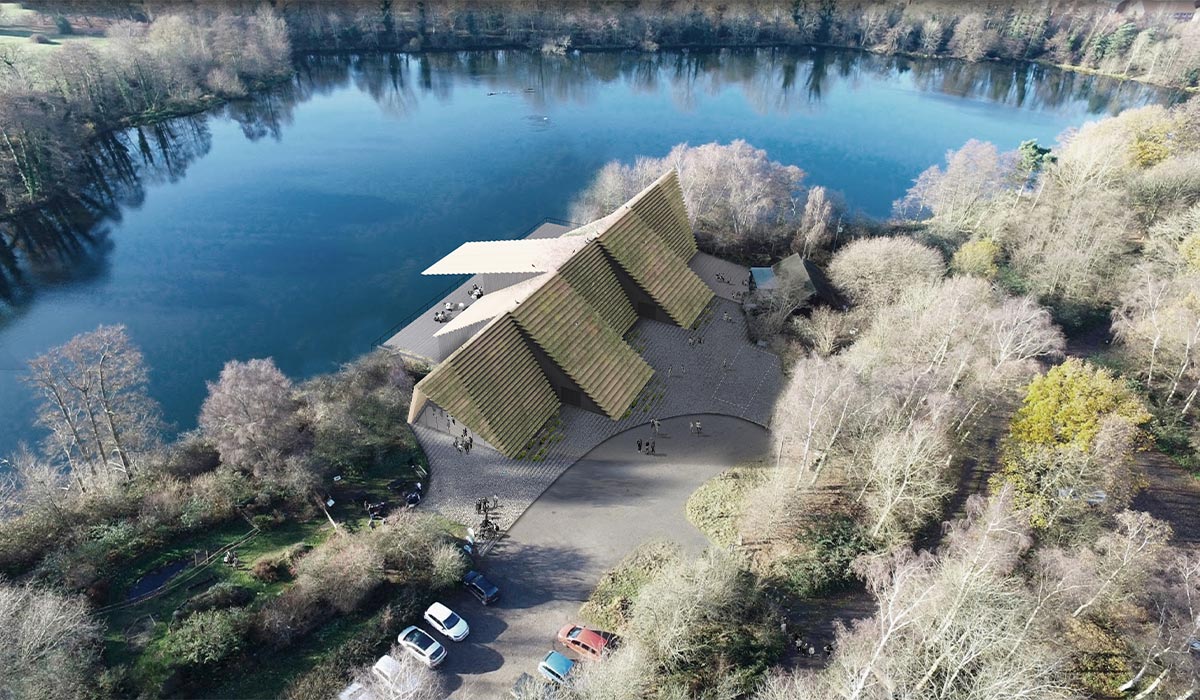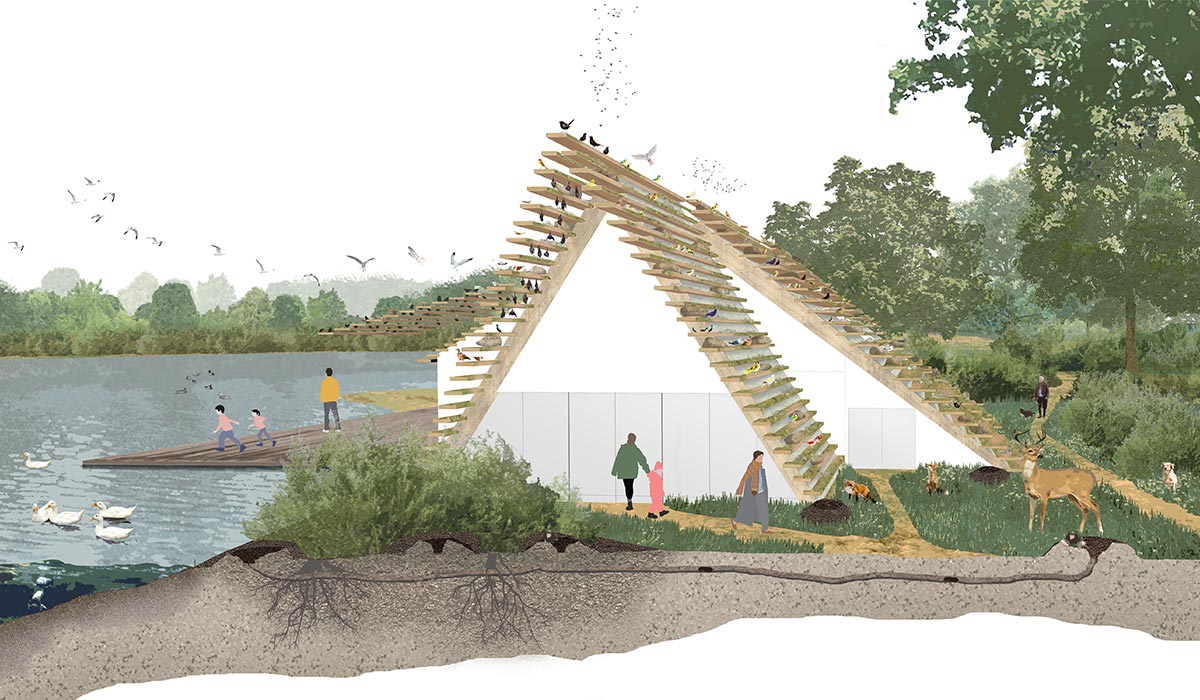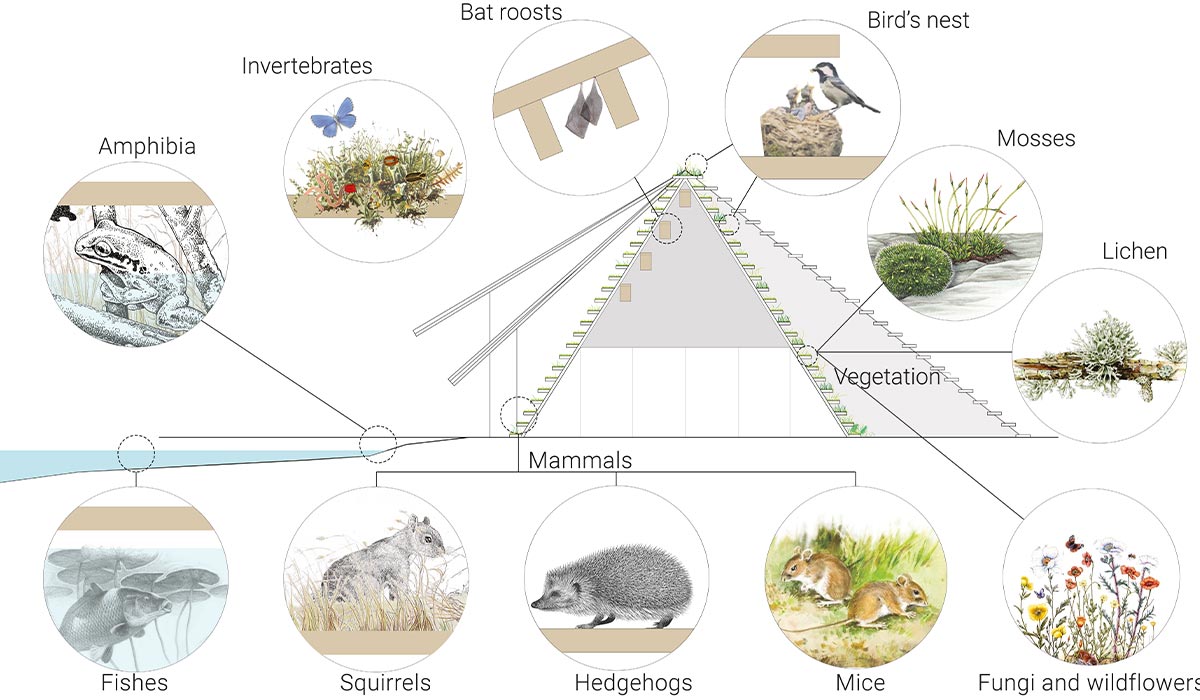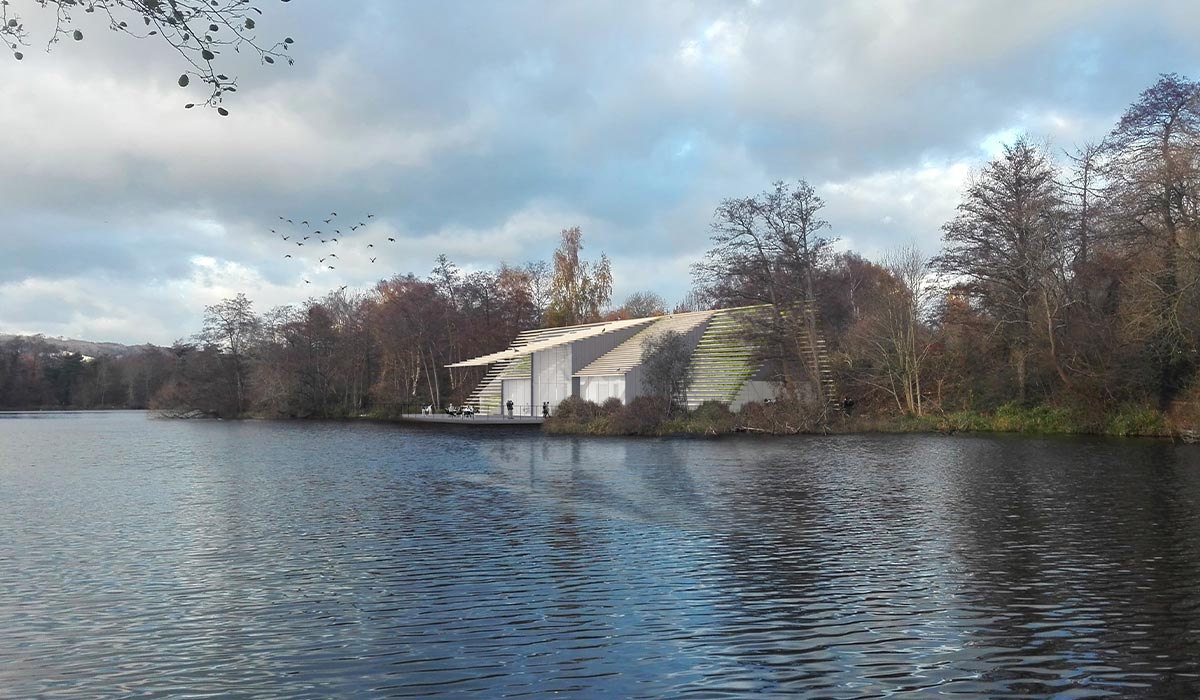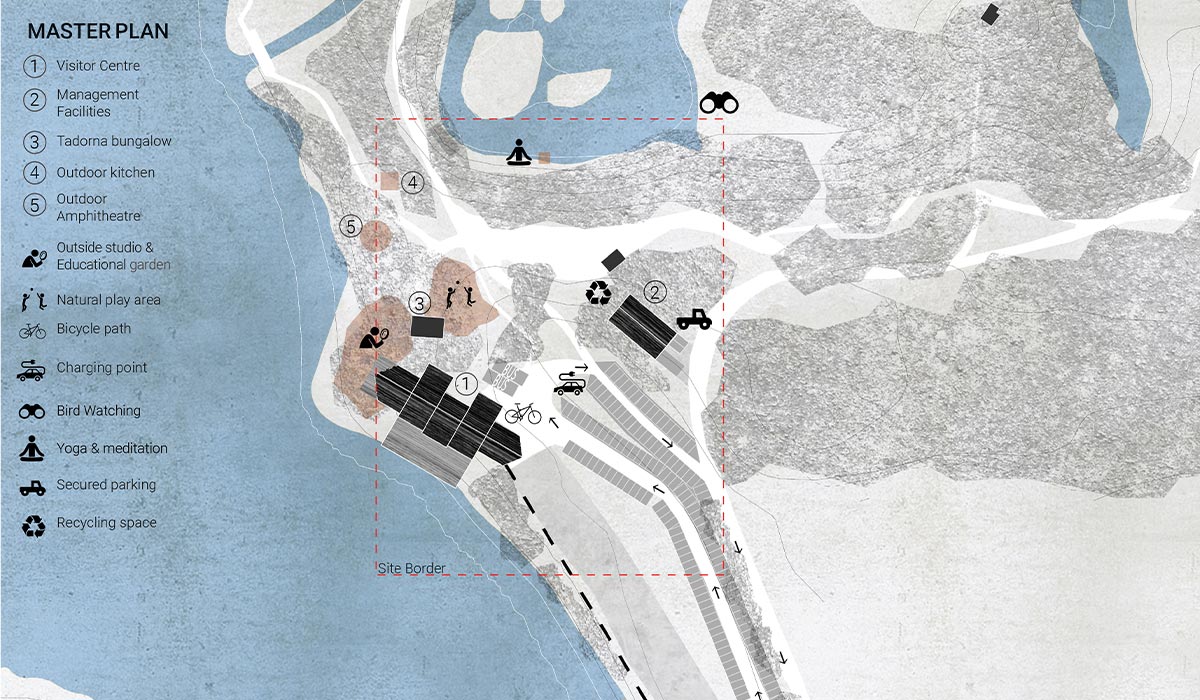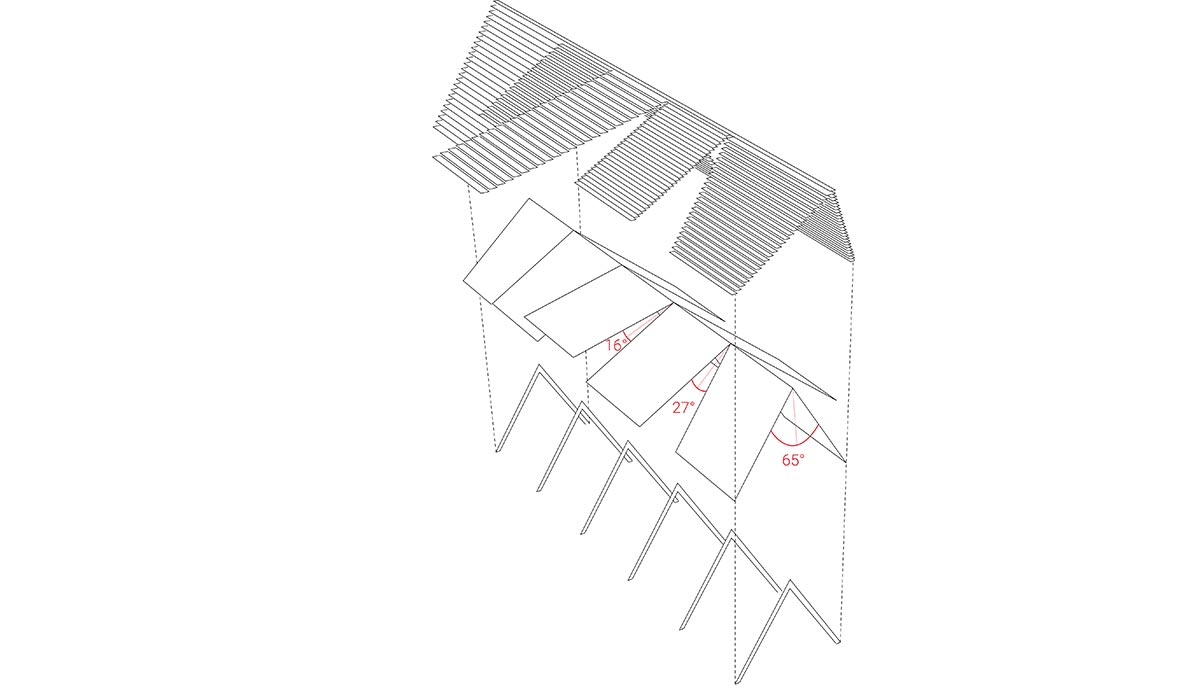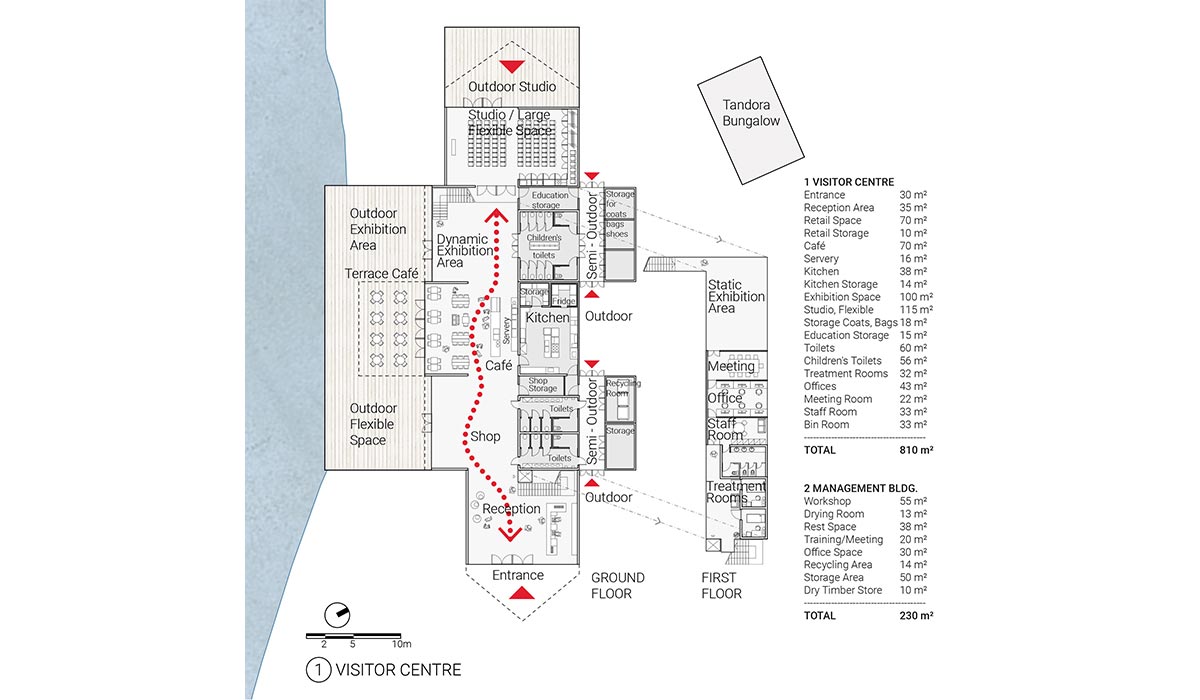Sevenoaks Visitor Centre
Kent, UK
2017 Competition
The proposal for the new Visitor Centre building aims at creating harmony with the surrounding Nature in a 2-ways integration.
On one hand, the building engages with the surrounding space by opening itself toward the outside, the lake and the nature, through a large outdoor Lake Terrace and an outdoor studio to the north.
On the other, we seek to integrate the Nature into the building by maximizing opportunities for the Reserve’s flora and fauna to “use” the building as part of the natural environment.
By designing different typologies of interstitial spaces all around the building skin, including on the roof, the external facades and under the building, we encourage small animals such as birds, bats and other to make the building as their home.
Similarly, the roof design naturally encourages the growth of moss on its surface and this will contribute to create a building which also acts as an ecosystem.
A simple triangular timber structure, a roof with varying pitches elegantly creates a shelter for all the required functions for the Visitor Centre in a simple yet flexible manner.
The layout is organized in two levels, ground and mezzanine, with the main program in the ground floor, facing the Lake, and additional functions which benefit from being more independent (treatment room, office, Exhibition Area) in the upper level.
To maximize flexibility all the spaces will be provided with an external access allowing each space to work independently.
We seek to develop details and solution that will be robust and that will minimize maintenance through time. Particularly on the external skin and roof we will aim at developing a design that will not require to be maintained “as new” always, but that will age naturally and beautifully, which will not only reduce maintenance but will also integrate with the environment better.
Maximising the use of natural materials will plays a key role in creating a low maintenance building able to live in harmony with the nature.
Locating the Management Facilities centre as an independent building will help maintaining a secure area for staff and management vehicles and goods.
A simple vehicular circulation with a one-way loop road will facilitate a clear traffic management for the Centre.
We aim at developing a design as sustainable as possible with very low carbon footprint. A highly energy efficient envelope will contribute to reduce the energy consumption of the building; we will use low energy consumption systems as much as possible, and energy production from renewable sources (photo-voltaic, geothermal, water collection and rain water re-use) and high energy efficiency (heat pumps, radiant panels) and aim to obtain a Near Zero Energy Building NZEB.
TEAM
Maurizio Mucciola, Maria-Chiara Piccinelli, Daria A. Moussavi, Felix Varaschini


